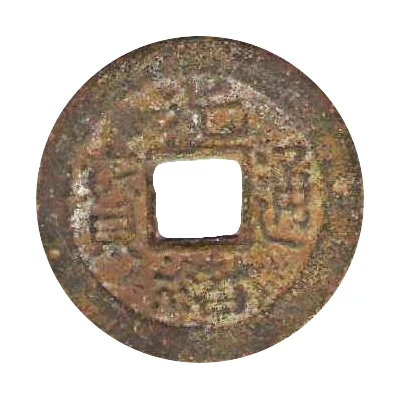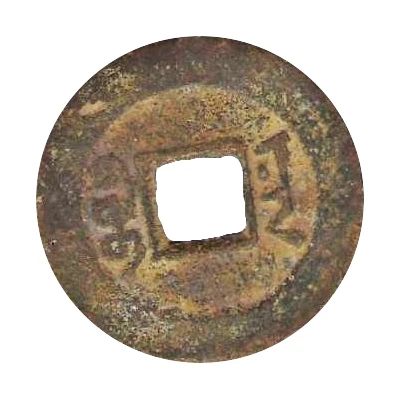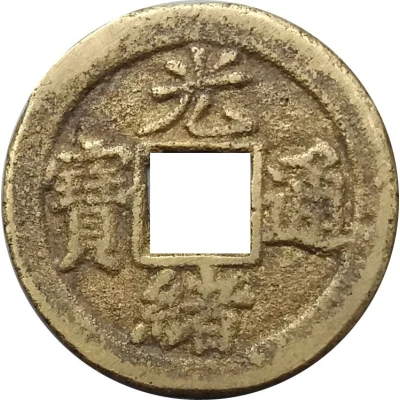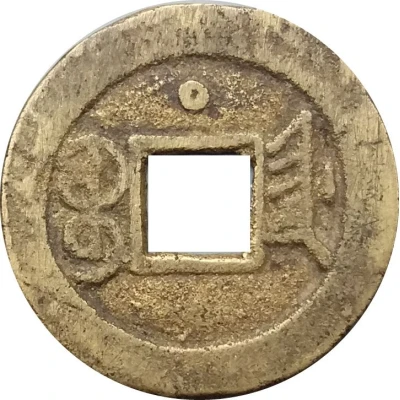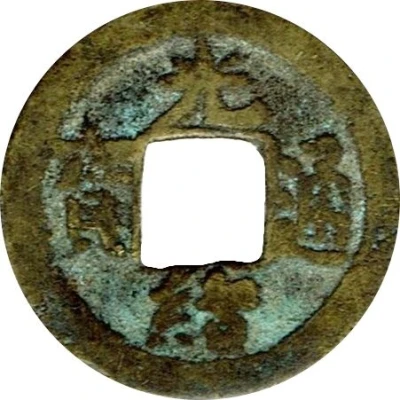
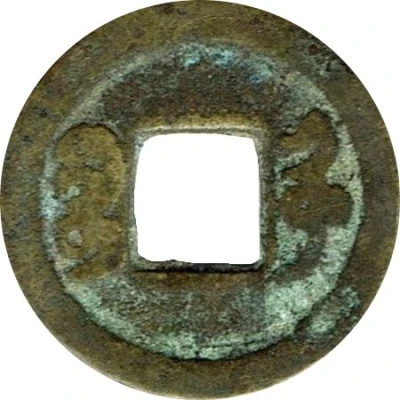

© Christopher Li (CC BY-NC-SA)
1 Cash - Guangxu Tongbao; Boo-gū ND
| Brass | - | 21 mm |
| Issuer | Empire of China |
|---|---|
| Emperor | Qing dynasty › Guangxu (光緒帝) (1875-1908) |
| Type | Standard circulation coin |
| Years | 1896-1899 |
| Value | 1 Cash |
| Currency | Cash (621-1912) |
| Composition | Brass |
| Diameter | 21 mm |
| Shape | Round with a square hole |
| Technique | Cast |
| Orientation | Medal alignment ↑↑ |
| Demonetized | Yes |
| Updated | 2024-10-04 |
| Numista | N#47055 |
|---|---|
| Rarity index | 83% |
Reverse
Two Manchu words (read vertically) separated by the hole.
Script: Mongolian / Manchu
Lettering: ᠪᠣᠣ ᡤᡡ
Translation: Boo-gū
Edge
Plain
Comment
DocTongDotsInteresting fact
One interesting fact about the Standard circulation coin 1 Cash - Guangxu (Tongbao; Boo-gū) ND (1896-1899) from Empire of China made of Brass is that it was designed by a French sculptor named Jean-Baptiste Farochon. Farochon was commissioned by the Chinese government to create a new design for the coin, which was intended to be used as a standardized form of currency across the country. The coin features an image of the Guangxu Emperor on one side and a traditional Chinese dragon on the other. The use of brass as the material for the coin was a departure from previous Chinese coins, which were typically made of silver or copper. This change in material was intended to make the coin more durable and resistant to wear and tear, and it also gave the coin a distinctive golden color that was highly valued by the Chinese people. Overall, the design and material of the coin reflect the efforts of the Chinese government to modernize and standardize its currency during the late Qing period.
